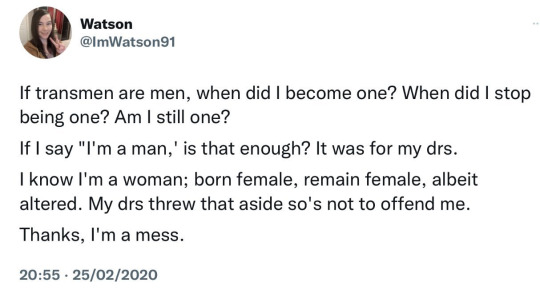#Healthcare Awareness
Text
EpiPens!

Do you or someone else you know carry an EpiPen? They're quite commonly carried, so let's start from the top!
What IS an EpiPen?
An EpiPen is a "pen" that has a dosage of the drug epinephrine, which stops anaphylaxis, which a severe allergic reaction involving the throat to close, from being fatal. Anaphylaxis can be triggered through contact with a substance that a person is allergic to, such as peanuts. Not everyone is highly allergic to substances to the point that anaphylaxis occurs when they come in contact with it, so not every person with allergies needs an EpiPen.
The most important thing to remember is that anaphylaxis is deadly. If not treated immediately, a person going into anaphylaxis can die. Sometimes, the allergic reaction will solve itself, but it is NEVER a good idea to wait and see if the reaction will go away on its own. If a person is going into anaphylactic shock, administer their EpiPen immediately if they are unable to do so themselves, or call for emergency services if they do not have one.
What are the signs of anaphylaxis?
Symptoms of anaphylaxis include:
difficulty breathing or shortness of breath
inability to swallow
hives, redness, swelling, and itchiness on the skin
cramps, nausea, vomiting, and diarrhea
lightheadedness, fainting, increased heart rate, decreased blood pressure, and weak pulse
How do I properly administer an EpiPen?
A good saying to remember is "blue to the sky, orange to the thigh." When you look at an EpiPen, you'll notice that one end is blue, and the other is orange. The orange end of the EpiPen is the end in which the needle will come out. It is imperative that you remember that this is the end that will be administering the epinephrine. You do NOT want to put your finger(s) or hand anywhere over the orange end of the EpiPen. The blue end is a safety cap! The EpiPen will NOT eject any epinephrine if this blue cap is not removed. EpiPens should be administered to the thigh, and clothing does not need to be removed in order to administer the EpiPen. The needle will go through any clothing, and inject the drug directly into the bloodstream. The steps to administrating an EpiPen are as follows:
Hold the EpiPen with the orange end facing the ground, and the blue end facing the sky.
Pull out the blue safety cap. Do not touch the orange end of the EpiPen.
Jab the orange end of the EpiPen into the thigh of the person going into anaphylaxis. You MUST do this hard. Do not worry about hurting the other person, the needle will not eject if you do not jab it hard enough. You are concerned about making sure they stay alive before you are concerned about hurting them.
Hold the EpiPen in place for ten seconds before removing it from the thigh. All EpiPens have directions on the pen, but some EpiPens say to hold them in place for three seconds, other say five, and some say ten. To ensure the ENTIRE dosage has been administered, hold it in place for ten seconds. it is better to hold it in place for longer than needed than not long enough.
Get immediate medical attention. A person who has been injected with epinephrine will need to undergo an examination to ensure they are alright, as epinephrine can cause the heart to stop.
If the person is still experiencing symptoms of anaphylactic shock after approximately five to fifteen minutes after the initial dose, a second dose may be needed. People who carry EpiPens must carry two at all times in case this occurs.
Anaphylaxis and Epinephrine Q&A!
"I don't have an EpiPen, can I use Benadryl?"
Benadryl and Epinephrine are both antihistamines, which means they both have the capability to combat allergic reactions. However, they do not act as fast as each other. Epinephrine is the only drug that can be used to resolve anaphylaxis, as Benadryl does not work fast enough. Remember, anaphylaxis kills! You need something that works FAST to save your or your friend's life!
"Where do I get an EpiPen?"
Your doctor must give you a prescription for an EpiPen! They are not over the counter, and can be quite costly if you do not have insurance- around $650 to $700. However, there are coupons and other offers available which can lower the cost of your EpiPen if you do not have insurance. But remember, not all insurance companies cover the cost of EpiPens, so check with your insurance provider!
"Is there a way I can practice using an EpiPen in case of an emergency?"
There are trainer EpiPens available! Some come with your EpiPen, so you can practice and show trusted individuals how to administer them if you are ever in an emergency!
“What happens if I administer my EpiPen thinking I was having a reaction, but I wasn’t?”
Don’t panic! Still get checked out, because as I mentioned, epinephrine can make your heart stop, but one dose of epinephrine when you don’t need it won’t kill you! Because epinephrine is metabolized fairly quickly, the effects of an unnecessary dosage including increased heart rate and blood pressure, will subside quickly!
#epipen#healthcare#medical science#how to administer an epipen#healthcare awareness#anaphylaxis#anaphylaxis awareness
0 notes
Text
Human as we are, we’re all prone to experiencing health problems every once in a while. Whether we like it or not, this is the reality. Sometimes, they are not too serious. Oftentimes, they impose a huge risk on wellness. Either way, it can’t be argued that it is best to seek medical help immediately. In most cases, people have to seek nursing services in Maryland to address their health problems.
0 notes
Text
Psychogenic Nonepileptic Seizures
Psychogenic nonepileptic seizures (PNES) present a perplexing challenge, both for patients and healthcare professionals. Often resembling epileptic seizures, PNES are distinct in origin, being triggered by psychological factors rather than abnormal brain
Psychogenic Nonepileptic Seizures
Psychogenic nonepileptic seizures (PNES) present a perplexing challenge, both for patients and healthcare professionals. Often resembling epileptic seizures, PNES are distinct in origin, being triggered by psychological factors rather than abnormal brain electrical discharges.
Understanding PNES
Psychogenic nonepileptic seizures mimic epileptic seizures in…

View On WordPress
#Acupuncture#annabackacupuncture#brain health#Brainspotting#Clinical Knowledge#Diagnosis#Emotional Healing#healing#Healthcare Awareness#malibu#Medical Research#Mental health#Neurological Disorders#Neurology#PNES#Psychiatry#Psychogenic Nonepileptic Seizures#Psychological Factors#Recovery#Somatic Symptom Disorders#Therapeutic Approaches#Therapy#trauma#Treatment#Video EEG Monitoring#wellness
0 notes
Text
reblog if you think these are all valid reasons for a student or an employee to take a day off from their school or their job without their grades or paycheck being affected in any way:
- period cramps
- exhaustion, be it mental or physical
- depression, anxiety, and other mental health related issues
#mental health#mental health awareness#mental health support#mental health issues#student#students#education#education system#politics#positivity#self love#self care#important psa#psa#academia#healthcare#hygiene#health and wellness#school#student life
2K notes
·
View notes
Link
ThinkRoman is our endeavor to provide healthcare awareness and healthcare to all using emerging technology.
We want to offer opportunities to young professionals in healthcare to collaborate and innovate with us
https://www.facebook.com/groups/ThinkRoman
Website: https://thinkroman.com
0 notes
Text
September is PCOS Awareness month, and I'd like to point out some of the many symptoms people with PCOS deal with everyday...
moon face
excessive body hair, arm, chests, back, face, legs and buttocks
irregular periods
painful periods
extremely heavy periods
constant bloating
mood swings
struggle to lose weight
struggle to gain weight
food cravings
high cholesterol
insulin resistance
oily skin
acne
insomnia
fatigue
sleep apnea
depression
anxiety
tubular breasts
dark and sensitive underarms
skin tags
belly fat
high testosterone
excessive hair loss
thinning hair
pelvic pain
infertility
ovarian cysts
And so much more, as well as having to struggle to even find a doctor who will take any of our symptoms and pain seriously. The medical industry needs to take better care of women, intersex and trans folks with PCOS and Endometriosis.
Our pains are real and we deserve better.
#pcos#pcosawareness#pcossupport#pcosjourney#endometriosis#endometriosis awareness#endometriosissupport#chronic illness#chronic pain#chronically ill#mental illness#healthcare#intersex#transgender#support#awareness
1K notes
·
View notes
Text
Health education to improve health equity in India | Power of One NGO
Health Education is the most powerful weapon you can use to change the world's picture. It is the most effective way to break out of the cycle of diseases and deaths. Years after Independence, a large population suffered from various diseases, especially kids. These children are not only deprived of their good health, but they lose their childhood to earn bread to breathe and survive.
NGOs are non-profit organizations that work towards developing the society and country by extending their helping hands and helping the community. They commonly provide free services in the education sector, health education, food, shelter, employment, women's empowerment, etc., depending on NGOs choosing their specific fields and work. Some NGOs like the Power of One serve the community and needy in multiple domains like kids' education, food for the impoverished, medical help, etc.
Power of One - Healthcare NGO in India
The Power of One NGO is located in Nagpur, Maharashtra. Since its inception in 2016, the Power of One team has primarily focused on healthcare sectors and arranging healthcare awareness programs. They put efforts like:
Establishing medical centres
Aiding kids with medical help
Helping women getting a healthy diet during their pregnancy
Educating people in rural regions about health care
Performing preventive health programs
Arrangements of pure water supply and sanitation
Endnote
Health is wealth. A healthy nation can progress better. NGOs like the Power of One are determined to serve the community and country. Hence, it looks into different areas to support and extend its helping hands.
The team believes every living organism can feel pain, including animals. And thus, they invest their time and show their care and love towards animals. The Power of One team has served several street dogs, cured their wounds and injuries, fed them, and finally left them free to breathe.
Humanity can be lived in various ways, and providing medical help and healthcare education is the best way to cure people suffering physically and mentally.
Depression is another fast-spreading disease nowadays, especially in older adults, due to feeling lonely. The Power of One Ngo helps them by looking after their food and cloth and allowing them to leave stress-free and bring them together in the company of other older adults.
Read more: https://www.powerofonengo.org/
#power of one ngo#healthcare awareness#healthcare ngo in india#health education#health awareness programs
0 notes
Text






March 12 is Detrans Awareness Day.
#Detrans Awareness Day#Sinead Watson#Ritchie Herron#detrans#detransition#queer theory#gender identity ideology#gender ideology#intersectional feminism#medical malpractice#medical corruption#medical scandal#medical mutilation#gender affirming care#gender affirming healthcare#gender affirmation#affirmation model#religion is a mental illness
308 notes
·
View notes
Text
Signs to tell if the person in your inbox, asking you to reblog a post with a link asking people to donate money for their sick pet or kid, is a scam
Before we start, a disclaimer that this is NOT a solid confirmation that this person must be a scammer. The intention of this is for you to be wary and always check before donating or rebloging this type of post.
Without further ado and from firsthand experience, here are the red flags:
The person in your inbox asking you to reblog a post with their donation link will always ask you NOT to publish the ask they sent you (but to only reblog their post), and their reasoning would always be something along the line of “I don’t want people to think I pressured you into doing it🥺”
But if you go to the person’s profile with their post asking for donation, 100% of the time, you’ll find that the account has only just been created days ago. — How can you tell this? Easy. You can literally scroll down to the first ever post of their blog in less than 10 seconds.
The thing these scammers have in common is that they will create a new blog and they WILL reblog some general posts, such as fandom posts, to make their blogs look legit. They will have legit profile pictures so they don’t look like bots. But it will always be a newly created blog with several reblogs (mostly about fandoms, because they know rebloging fandom posts will make them look more legit than if they were to reblog some suggestive photos of some women, since the latter will make them look like p0rn bots), and the only original post they made is that post asking for donation.
Move on to the information they provided about their sick pet or kid. They will provide thorough and detailed information to make it look legit. But the thing is that they could just take that from google or steal that information from someone who actually needed the donation. There is never a way to tell if your money will go directly to help save the pet or the kid. My advice is to google the patient’s name and see how old the case is, if the case of this patient with this name and this information has been used to ask for donation by other people before, etc.
The photo of the patient they gave can also help you determine if it’s legit. Save that photo and then use google image search to see if it’s an original photo or if it’s a stolen one that has been used before.
Bonus: the thing these scammers can’t do is provide updates about how the patient’s doing. So it’s only just one post with the link asking you for your money. If it is legit, you should be able to see consistent updates of how this patient is doing or if there’s any change, etc. (I’m not saying it’s a requirement for those whose loved one is in critical care to post updates on social media all the time, I’m simply pointing out that scammers tend to fail to provide any update because they can’t.)
I’ll always encourage donating and helping spread the posts of those who actually are in need, though it’s just so unfortunate that, while there are people who are genuinely struggling, there are a lot of scammers out there looking for an opportunity to take advantage of people’s kindness and using sick pet or kid as a way to scam people and making it more difficult for people who really need help to be taken seriously.
Last but not least, fuck those scammers. Stay safe y’all.
#important#psa#important psa#b00st#signal b00st#signal boost#useful information#useful tips#life tips#healthcare#mental health#mental health awareness#self care#self love#tumblr#mental health care#positivity#life lessons#life coaching#life hacks
170 notes
·
View notes
Text
Why it's hard for schizophrenic people to get treatment and diagnosis for physical health problems:
• Having "schizophrenic" in our charts makes a lot of medical professionals automatically not believe us. Especially if it is a problem that they can't instantly see themselves. They may think we are either delusional or having some kind of tactile hallucinations. They could see it more as a "psychiatric problem" rather than the physical medical problem that it is.
• If you have flat or blunted affect, they may not believe you, especially if you are describing pain. They have the expectations that you would be screaming, crying, grimacing, etc. When you are straight faced and monotone and say "I am in extreme pain right now" they will likely not believe you. And this paired with medical professionals views of chronic pain just makes them not believe you even more.
• Alexithymia makes describing your symptoms very hard, and even harder to describe how the symptoms affect you. The medical professional goes off of what you tell them, if you are vague or don't have the words, they will not understand you or not believe what you are describing. Either way that will hinder your road to treatment and diagnosis.
• Having memory problems, or trouble keeping track of things can also hinder your care. If you can't remember, or even remember to write down how often a symptom occurs, how long it lasts, how it felt in the moment, and how it impacted your life at the time, they may once again not believe you. Diagnosis often requires some sort of timeline or prevalence of symptoms, and not keeping track of that could keep you from diagnosis.
• They may avoid prescribing pain killers (even if you need it) because the fact that schizophrenic people are more likely to abuse drugs than the general population. And while that fact is true, it doesn't mean that someone in extreme pain does not deserve the right to pain killers just as much as anyone else who needs them.
• Being part of a disenfranchised group while also being schizophrenic can have compounding affects on your physical health treatment. Being low-income, being a person of color, being assigned female at birth, being transgender, being intersex, any other disenfranchised group or any combination of these will impact how you are treated by the healthcare system.
• Fear of medical professionals, or fear of Dr.s offices can impact the quality of your visit. You may feel too frightened to tell them how you really feel, you may just completely avoid going into the building at all. This can happen to anyone but is especially common for schizophrenic people due to our paranoia, inability to advocate for ourselves, lack of self esteem, historical medical abuse or personal experiences with medical abuse. Plus we can have doubts about the quality of our care because of any of the other reasons listed above.
And all this occurs while we as schizophrenic people, are at higher risks of several physical health problems (you can read about it here):
#i will make a part 2 on how i personally deal with these issues#this itself is just to raise awareness#schizophrenia#tw medical abuse#schizophrenia stigma#sanism#flat affect#blunted affect#memory problems#memory issues#alexithymia#medical abuse#medical neglect#tw healthcare#tw drs#tw painkillers#tw medication#tw drug abuse
537 notes
·
View notes
Text

#asexual#asexuality#ace awareness#ace community#lgbtqia+#abortion rights#women rights#women matter#healthcare
2K notes
·
View notes
Text
Denying a patient the right to a diagnosis just bc the disorder you suspect they have doesn’t have a cure is ableist and abuse of power.
Patients have the right to know what is going on with their body. If you aren’t prepared to help them, there is an entire community who can provide them with the knowledge & skills you lack (symptom management, clinical trials, latest research, emotional support, list of specialists and treatment options, etc).
The least you can do is give them the diagnosis.
#tw healthcare#medical ptsd#ableism#ehlers danlos syndrome#ehlers danlos problems#dysautonomia#hashimotosthyroiditis#chronic lyme#disabled community#chronic illness community#disability awareness#accessibility matters#problematic doctors
1K notes
·
View notes
Text

@pisforpandemonium Absolutely!
So the first book I'm gonna recommend is Soteria by Loren Mosher and Voyce Hendrix. It's about the development of a home/intentional community for people with schizophrenia/psychosis. This home was very pro-autonomy, many workers had psychosis themselves, and they did use meds, but it was always the resident's choice and usually not the first line of treatment, as they found that psychosis often resolved on its own within a few weeks. Some of the methods used at Soteria were a little... wacky, being the 70s, but all in all it was very successful. There are now Soteria Houses all over the world.
Another one is Healing: Our Path From Mental Illness to Mental Health by Thomas Insel, MD. It's written by the former director of NIMH, and while I don't agree with every one of his takes, there is a great chapter about the Clubhouse Model, another peer support model created by a bunch of ex patients, by and for people with mental illness. People in the clubhouse are Members, not patients. They are assisted with vocational goals, food, etc, and most importantly, given community. It's a really interesting paradigm and there are hundreds of clubhouses all over the world now.
The Voices Within by Charles Fernyhough is a bit dry IMO, but it goes over the research behind voice-hearing and goes into the Hearing Voices Movement - another, you guessed it, peer support movement for voice hearers and other folks who have experiences not aligned with consensus reality i.e. psychosis.
Some others I haven't read yet are Geel Revisited after Centuries of Rehabilitation by Eugeen Roosens, and On Our Own: Patient Controlled Alternatives to the Mental Health System by Judi Chamberlin.
I'm also gonna rec a bunch of podcasts.
Heart Forward: Conversations from the Heart has a ton of awesome episodes about the US mental health system and alternatives to it. They have lovely episodes about peer respite and Trieste. It's such a compassionate and solution-focused podcast with a diverse amount of topics, I love it.
Patricia Deegan: Personal Medicine is a great one about Dr. Deegan's life and the Commonground Software she developed to help aid in joint decision-making with patients and providers, where patients have a solid say in their treatment. (I've listened to a ton of interviews with Dr. Deegan and she is an amazing, inspiring individual)
A Place of Safety? is hosted by an Italian psychiatrist who worked in Trieste (an Italian city with world-renowned mental healthcare) and he talks about a lot of problems with the NHS and how it relates to Trieste.
Alita Taylor - Open Dialogue is an episode about a highly successful mode of treatment in Western Lapland for people with psychosis and other mental illness. Here's a documentary I just found about the practice, haven't watched it yet but it looks cool.
Mad in America also has some interesting podcasts about many of these topics
Some articles:
Bethel House, basically Japan's version of Soteria
Hearing Voices Movement, as previously discussed
Hurdalsjøen Recovery Center, a "medication-free" hospital in Norway (meds are optional, not banned lol, and they also assist with tapering off)
Recovery Colleges, where struggling individuals, caregivers, and professionals all take an active role in learning about mental health
Obvs this isn't everything but I hope I've given you a good starting point!
#it's actually a goal of mine to write a book summarizing every one of these that I'm aware of lol bc afaik there isn't one yet#just every goddamn innovative and humane mental health practice there is :3#pisforpandemonium#reply#psychiatry#mental health#psychiatry critical#healthcare reform
155 notes
·
View notes
Text
Every medical insurance should cover the following for everybody:
Mobility aids
Sensory aids
Braces
Orthopedic shoes
Compression wear
Glasses
Hearing aids
Service dogs
Psychotherapy
Occupational therapy
Physical therapy
Home care aides
#disabled#spoonie#cripple punk#modern medicine#healthcare#medical care#the future is accessible#accessibility#accomodation#disability awareness#disabled lives matter#disabled community#actually disabled
1K notes
·
View notes
Text
anxiety, depression and/or being mentally and/or physically exhausted should always be a valid reason for any employee to take a day off without their paycheck being affected in any way, and also for any student to take a day off without their grade being affected in any way by the way
#important#mental health#mental health awareness#mental health support#important psa#psa#politics#healthcare#medical care#student#studyblr#career#business#capitalism#studying#study#career growth#career goals#political#news#tumblr
395 notes
·
View notes
Text
Just a reminder that if you ever feel a lump or unusual pain in your chest/breasts you should get it checked out just to be safe. Especially if it’s been there for more than a day or two or is causing you discomfort, it’s good to ensure it’s not serious or that if it is you can get the right treatment. Trust your body to know when something is off!
#planned parenthood is a great affordable option#now I’m getting an ultrasound for a lump in my chest :/#and if I hadn’t gone I wouldn’t have known I needed one!#trust your gut#text#suggestions#positivity#self care#physical health#self health#healthcare#breast/chest pain#breast pain#breast health#breast cancer awareness
67 notes
·
View notes